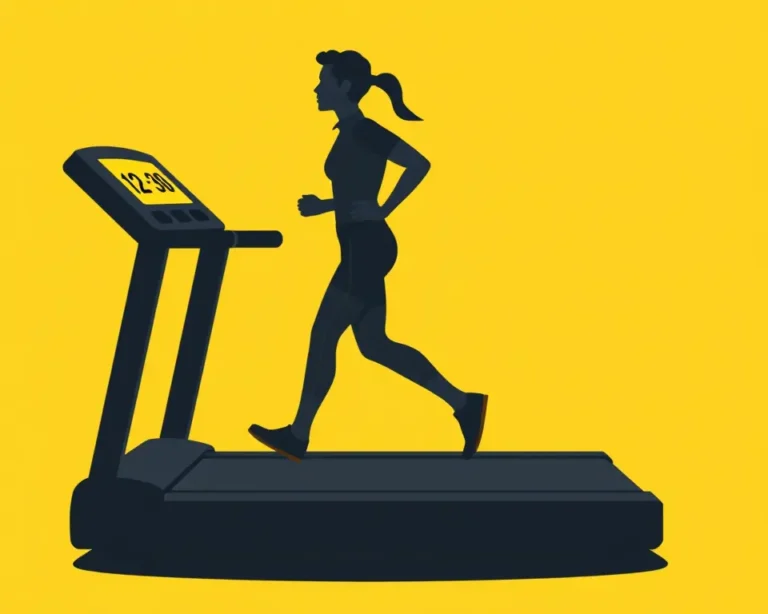The 12-3-30 treadmill workout has taken the internet by storm, promising an effective and simple way to improve fitness. But does it live up to the hype? Here’s what experts have to say about this trending routine.
What is the 12-3-30 Workout?
The 12-3-30 workout is a treadmill routine popularized by social media influencer Lauren Giraldo. It involves:
- Setting the treadmill incline to 12%.
- Setting the speed to 3 miles per hour.
- Walking for 30 minutes.
Giraldo credited this routine with helping her lose 30 pounds and overcome gym intimidation. The workout’s appeal lies in its simplicity and the fact that it doesn’t involve running.
Potential Benefits of the 12-3-30 Workout
Experts acknowledge several potential benefits of the 12-3-30 workout:
- Cardiovascular Health: Walking on an incline elevates your heart rate, providing a cardiovascular challenge. Moderate-intensity walking can lower systolic blood pressure and improve cardiorespiratory fitness.
- Lower Body Strength: The incline activates muscles in your glutes, hamstrings, calves, and back, helping to build lower body strength. It can be a great way to activate multiple muscle groups in your legs.
- Calorie Burning: The workout can burn a significant number of calories, potentially aiding in weight loss when combined with a balanced diet. One session may burn between 300 and 800 calories. A study found that treadmill walking at incline level 5 increased calorie burn by 52%, and walking at incline level 10 upped the calorie burn by 113%.
- Low Impact: Compared to running, the 12-3-30 workout puts less stress on your bones, ligaments, and tendons, reducing the risk of injury.
- Accessibility: The workout is relatively simple and requires only a treadmill, making it accessible to many people.
- Improved Stamina and Endurance: The 12-3-30 workout can improve cardiovascular endurance and overall fitness.
- Bone Strengthening: The workout is beneficial for your bones.
- Reduced Risk of Injury: It can be a good alternative if you need a break from high-intensity training but still want a workout that packs a major punch.
Potential Risks and Drawbacks
Despite its benefits, the 12-3-30 workout also has potential risks:
- Lower Back Strain: Walking on a steep incline can put pressure on your lower back, especially if you have poor posture.
- Joint and Muscle Strain: Beginners or those with pre-existing knee, hip, or lower back issues may find the incline taxing, potentially leading to joint or muscle strain.
- Overuse Injuries: The repetitive motion can lead to overuse injuries, particularly in the calves and Achilles tendons.
- Not Low Impact for Everyone: It can stress the body more than you think. This also means that 12-3-30 could lead to injuries for anyone with hip, knee, or ankle issues.
- Cardiovascular Concerns: The sustained incline may raise your heart rate too high, especially if you are new to exercise or have a heart condition.
- Monotony: The repetitive nature of the workout can become monotonous.
- Lack of Fresh Air and Sunlight: You don’t get the benefits of fresh air and sunlight from walking outdoors.
- Overtraining and Burnout: This workout requires high energy expenditure. So it can be easy to overdo it in your first few sessions and feel exhausted afterward, causing a sharp drop in motivation.
- Lack of Progression: The workout doesn’t include any sort of progression. The workout will keep burning calories, sure, but if you want to see continued improvements in your fitness then you need to gradually make your training more challenging over time by upping various variables – in the case of a treadmill, the main ones are speed, gradient and time.
Expert Recommendations
Fitness experts offer the following recommendations regarding the 12-3-30 workout:
- Start Slowly: If you’re new to exercise or have any health concerns, start with a lower incline and gradually increase it as you get stronger.
- Listen to Your Body: If you feel any pain or discomfort, stop the workout.
- Maintain Good Posture: Keep your shoulders back, engage your core, and avoid arching your back.
- Warm-up and Cool-down: Always warm up before the workout and cool down afterward with stretching.
- Cross-Training: Incorporate other forms of exercise, such as strength training and mobility work, into your routine.
- Progression: Gradually increase the intensity of your workouts over time by upping various variables such as speed, gradient and time.
- Consult a Professional: Talk with a healthcare professional before trying the workout if you have health concerns that may affect your fitness plan.
Modifications and Alternatives
If the 12-3-30 workout is too challenging, consider these modifications:
- Reduce the Incline: Start with an incline of 3% to 8% and gradually increase it.
- Reduce the Speed: Slow down the pace to a comfortable walking speed.
- Shorten the Duration: Begin with 10-15 minute sessions and gradually increase the time.
- Intervals: Alternate between periods of incline walking and active recovery (walking at a lower incline or speed).
If you don’t have access to a treadmill, try these alternatives:
- Hill Walking: Find a hill in your neighborhood and walk up and down it.
- Stair Climbing: Use a Stairmaster or climb stairs.
- Stationary Biking: Increase the resistance on a stationary bike.
- Rowing Machine: Set the resistance on a rowing machine.
- Elliptical: Use the elliptical machine.
12-3-30 vs. 10,000 Steps
Both the 12-3-30 workout and walking 10,000 steps a day have pros and cons. The mental and physical benefits of both far outweigh any drawbacks.
Walking 10,000 steps a day may leave you feeling far better than spending 30 minutes staring at a treadmill screen. However, there will be people out there who prefer the structure and tangibility of the 12-3-30 method. The deciding factors are enjoyment and accessibility. Which one are you able to do regularly, and which one is fun enough to keep you coming back for more?
Is the 12-3-30 Workout Effective?
The effectiveness of the 12-3-30 workout depends on your individual goals and fitness level. It can be an effective way to improve cardiovascular health, build lower body strength, and burn calories. However, it’s not a magic solution and should be combined with a balanced diet and other forms of exercise.
The Bottom Line
The 12-3-30 workout can be a valuable addition to your fitness routine if approached with caution and tailored to your individual needs. Listen to your body, modify the workout as needed, and consult with a healthcare professional if you have any concerns.







